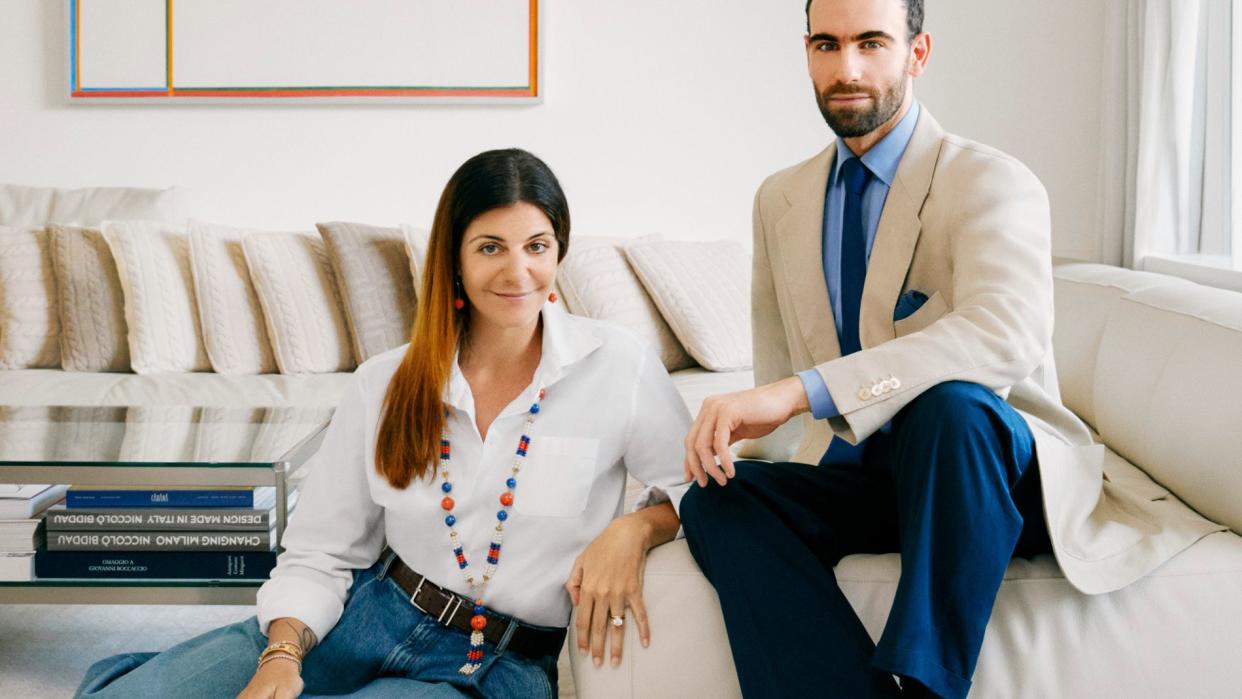The Sotto Voce Royals of Italian Quiet Luxury

In some corners of the fashion industry, reporters speculate about the future of Italian luxury as it faces competition from French conglomerates. The conventional wisdom has it that investors who value the French model of quick-change creative directors worry that Milan’s monarchs are flagging because they refuse to plan for succession. Never mind the flawed premise of that argument—during September’s Milan Fashion Week, some retailers reported that their Italian business was actually stronger than their French—one dynasty actively preparing for a continuation of power is the Maramottis, the family behind the Max Mara Fashion Group, named for its flagship label.
If the family name doesn’t ring a bell, that’s because it’s how they prefer it. The Medicis of Reggio Emilia run, sotto voce, a mighty empire of brands, nine in all, with some 2,500 stores in more than 100 countries, that defined quiet luxury before the phrase existed. And they’ve done so for seven decades without expanding into diffusion lines—no homewares extension here, not even menswear—or leaning too heavily on influencer culture. More importantly to the heirs of the founder, Achille Maramotti, the company has remained independent, and their children, who are now rising through the ranks, intend to keep things that way for posterity.

“We are here as a representation of the third generation, which is a little wider than just the two of us,” says Maria Giulia Prezioso Maramotti, 39, a global ambassador for Max Mara and the omnichannel retail director at the contemporary label Max&Co. She was speaking alongside her cousin Elia Maramotti, 33, Max&Co.’s brand director, from Reggio, Achille’s birthplace and the company’s longtime headquarters. For them, carrying on their birthright is a matter of pride and a strategic advantage in a crowded marketplace that fetishizes economies of scale above all else.
“In the financial sector, family-owned businesses are seen as lower-risk, because behind them are people who really care, which is very valuable,” says Elia, who earned a master’s from England’s Warwick Business School. “It’s also something quite beautiful, going all the way back to the bottegas, with fathers teaching their children how to make things.”
There may be something in the water in Reggio (besides lots of parmesan). Achille was himself building on a legacy. His great-grandmother Marina Rinaldi, now the name of another brand in the group, was a dressmaker, and his mother opened a tailoring and sewing school. Italian industry boomed after World War II, and Achille applied the latest manufacturing techniques to the making of haute couture–quality clothes for a rising middle class. Max Mara was born in 1951 with a suit and a coat, and when Achille died in 2005 the company had sales of $1 billion, the New York Times reported at the time. (Privately held, the group does not issue revenue figures.)

Achille was a savvy businessman, and he also diversified into other investments, including banking (Elia’s father Luigi, the group’s chairman, is deputy chairman of Credito Emiliano) and art, establishing one of Italy’s earliest private collections of contemporary work. Forbes estimated Achille’s personal fortune at $2.1 billion in 2004.
“Our grandfather wasn’t a designer, he was an entrepreneur,” Maria Giulia says. “We are a family of entrepreneurs.” Elia adds, “He was knowledgeable of the business, but his creativity was in enterprise.” Achille’s three children, including Ignazio and Maria Giulia’s mother Maria Ludovica, became company executives, and there was an expectation that their children would too. “Elia makes fun of us because for breakfast we’d have a board of directors meeting with Mom,” Maria Giulia says.

Mini Teddy Bear Icon Coat
maxmara.com
$1750.00
The two cousins joined the trade early on, toiling in stock rooms, and spent their formative professional years far from the nest: Shanghai for Elia, New York City for Maria Giulia, after she studied business administration at Bocconi University. The experience abroad gave them an appreciation of the virtues of the Italian approach to luxury—the way family governance allows them to stick to their guns instead of chasing clicks.
“You don’t need to have a report every three months,” Maria Giulia says. “You can afford to take your time.” Their rivals, meanwhile, are at the mercy of shareholders and fickle Gen Z shoppers. “Our grandfather used to say, ‘To be too trendy is dangerous,’ ” Elia says. It’s a lesson they have all taken to heart, and to the runway.
The resort and spring Max Mara collections designed by veteran creative director Ian Griffiths—the latter inspired by “utility glamour”—featured new interpretations of coats still going strong years they debuted. Even the Teddy, now 10, keeps getting reinvented. It’s now available for children, including Maria Giulia’s own young daughter, the fourth generation waiting in the wings.
This story appears in the November 2023 issue of Town & Country, with the headline "Reggio Empire." SUBSCRIBE NOW
You Might Also Like
